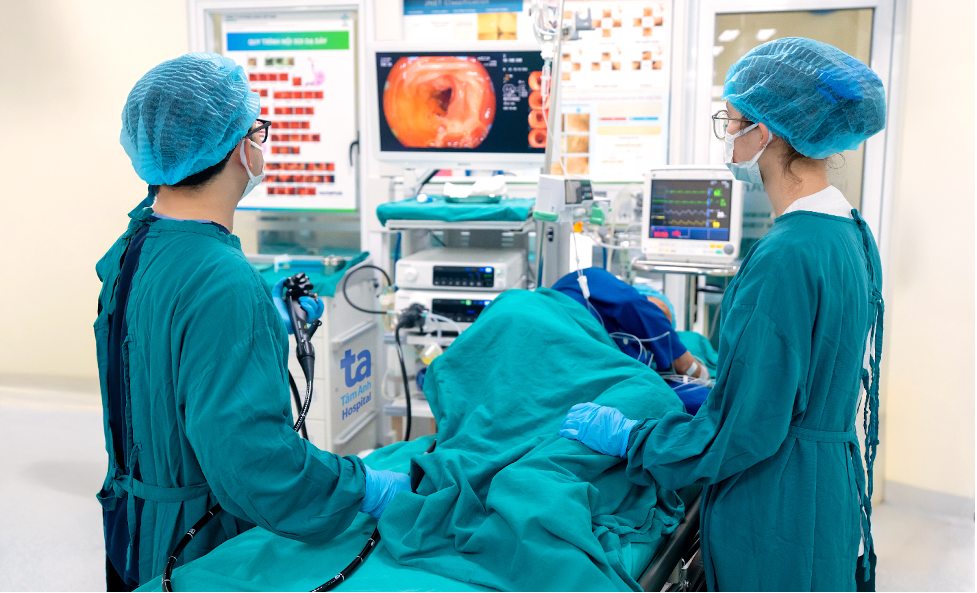Answer:
Colon polyps are abnormal clumps or masses of cells that grow on the lining of the colon. Polyps form due to gene mutations that accumulate as colon lining cells divide and renew.
Most colon polyps don't cause symptoms and are often discovered during a colonoscopy. Doctors should counsel patients about polyp removal before performing a colonoscopy.
 |
Doctors performing a colonoscopy on a patient. Illustration: Tam Anh General Hospital
Most polyps are benign tissue masses, meaning they are not cancerous at the time of detection. However, about 8-10% of colon polyps will develop into cancer within 10 years, and 24% within 20 years. This risk is higher if there are three or more polyps in the colon, if a polyp is larger than 10 mm, and depending on its shape and classification.
Based on their shape and microscopic appearance, doctors classify colon polyps into two types: non-neoplastic and neoplastic.
Non-neoplastic polyps are not likely to become cancerous. This type includes hamartomatous polyps, pseudopolyps, or benign hyperplastic polyps. If they are small, under 5 mm, and harmlessly present in the colon, non-neoplastic polyps don't necessarily need to be removed.
In contrast, tubular adenomas or sessile serrated adenomas are classified as neoplastic. Neoplastic polyps have the potential to develop into colon cancer and should be removed as soon as possible.
Polyps have a high risk of recurrence, so patients should have follow-up appointments and repeat colonoscopies after a few years to avoid overlooking any new growths.
Dr. Nguyen Duc Luan
Department of Oncology
Tam Anh General Hospital, Hanoi
| Readers can submit questions about cancer here for doctors to answer. |












